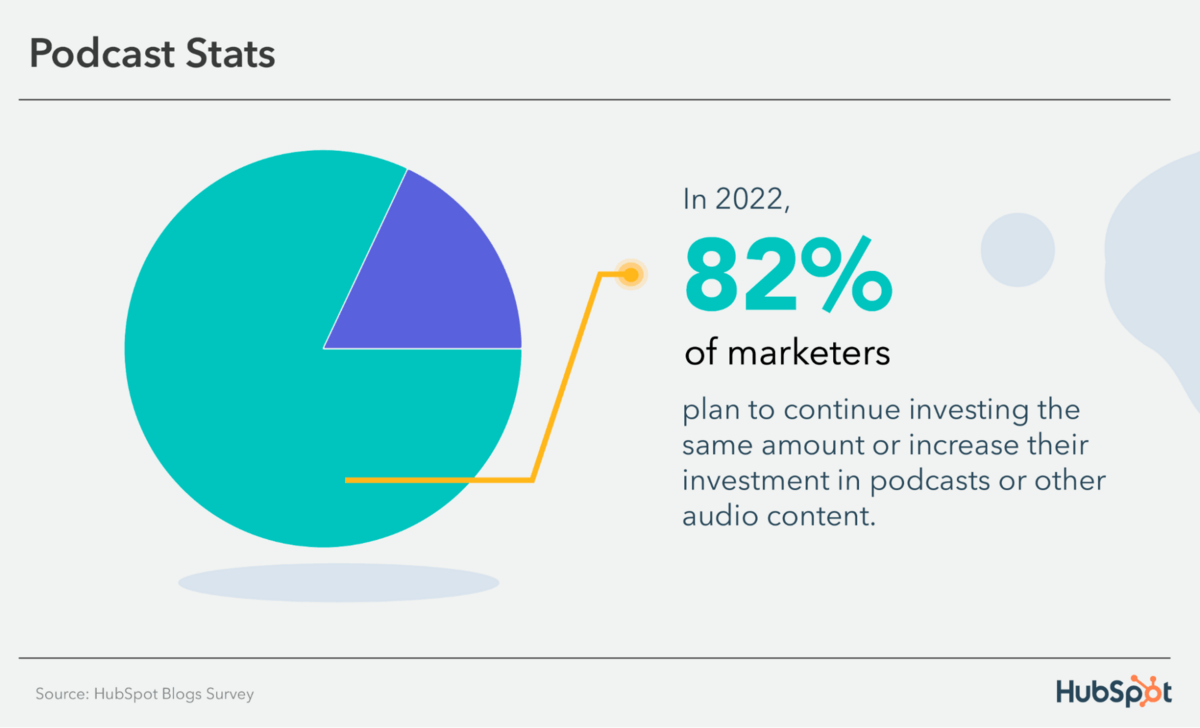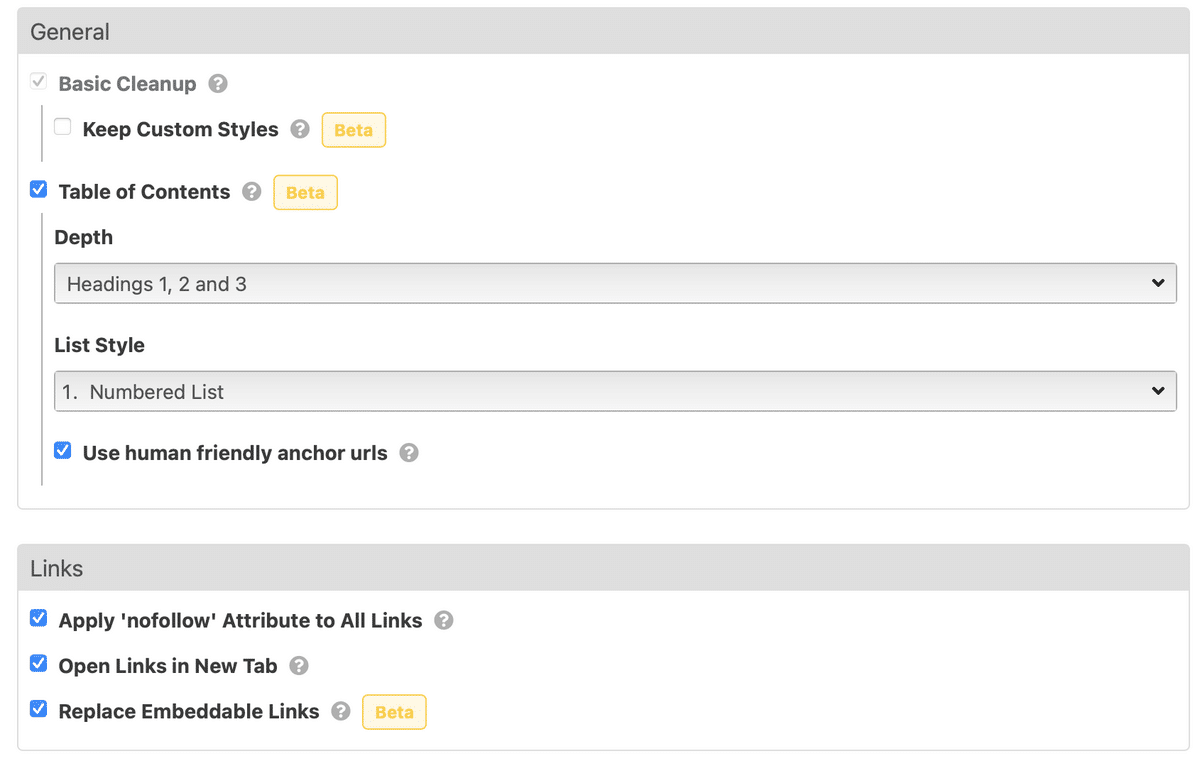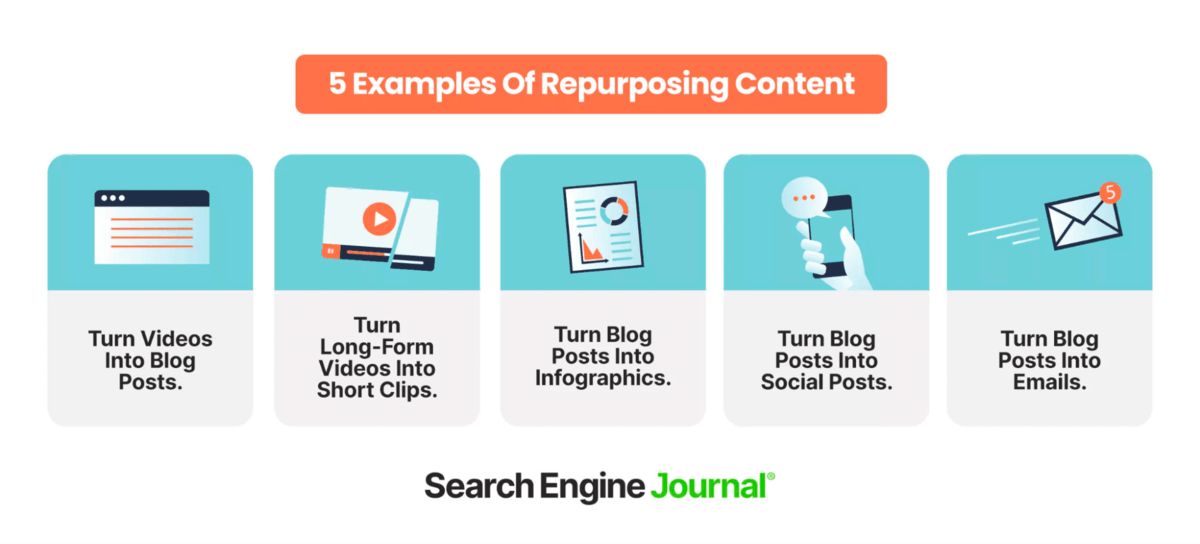
A robust digital marketing strategy relies on quality content. Even Google rewards businesses that offer valuable and relevant content in various formats.
The majority of marketers advocate for a strong content strategy. But the catch is this: you can only achieve a good strategy with a good content development process.
Read on as we delve into effective content development. We’ll discuss how to align your content ideas with your business goals. We’ll also look at how to distribute your content to ensure maximum return on investment (ROI).
Effortlessly export your Google Docs to WordPress with just 1-click.
Get Started Today
It’s the process of creating, refining, and distributing content to meet strategic goals. It involves the following key stages:
Content development is a critical component within the broader content marketing umbrella. However, they serve different purposes when marketing a business.
Let’s review the differences in detail.
| Content development | Content marketing | |
| Focus | Creating and refining content focusing on quality, relevance, and organizational goals. | Takes a broader strategic approach. Uses content as a tool for marketing and business growth. |
| Process | Involves generating ideas, planning, creating, editing, and distributing content to meet specific objectives. | Goes beyond content development. It includes audience analysis, competitor research, goal setting, and performance measurement. It involves creating a comprehensive content strategy for marketing objectives. |
| Goals | Make high-quality and engaging content that connects with the target audience. The content should provide value and also meet informational or entertainment needs. | Attract, engage, and keep the target audience by delivering valuable, relevant, consistent content. It seeks to drive profitable customer action. |
| Scope | Covers the whole content creation journey, from initial idea to product distribution. | Involves the entire content ecosystem. It integrates content development into a larger strategy. This includes audience targeting, distribution channels, and content marketing analytics for assessing success. |
In 2024, 50% of marketers intend to increase their content marketing investment. Here are some popular content formats you can incorporate into your process:
Write blog posts about your industry to show you know and understand the latest trends. Make a plan that helps people with problems and guides them.
For instance, suppose you’re in the contract automation software business. In this case, you can write about the contract management cycle and the risks of poor contract management.
Or, better yet, write an ultimate guide on the topic. To do this, Google your keyword, “contract management cycle” and take a look at the top search results. As you can see in the screenshot below, they’re all explainer guides on the stages of the “contract management cycle,” and what that means.

Screenshot provided by Author
To meet your target audience where they are (in their search), you’d need to write a similar, but better guide. Answer the same questions the other guides do, but answer them more thoroughly. Answer additional questions – you can find them in the “People Also Ask” section of Google.

Screenshot provided by Author

Video is the most versatile piece of content. You can use them for how-to guides, customer stories, or product demonstrations. But making good videos isn’t easy. You need to plan well to create impactful video content that ranks well (read: is search engine optimized).
Before filming, consider the following:
There are other important questions to ask yourself after filming, like:
Case studies act as tremendous social proof.
Use them to show how your customers have tackled problems with your product or service. Add background information on the customer and details about their problem. Especially important here is to provide a lowdown of the proposed solution. You can also add testimonials to prove your solution’s effectiveness.
Suppose you sell procurement management software. In that case, you create a case study of one of your clients, showing how your software solution transformed their procurement and spend management processes, leading to greater efficiency, cost savings, and improved supplier relationships. This case study illustrates the potential benefits that organizations can have by adopting modern procurement solutions.
Leverage newsletters to build a deeper connection with your audience. Use personalized emails to highlight sales, white papers, or industry-relevant recommendations. In contrast, newsletters and emails are great for sharing industry news and stories. This way, you can provide valuable content your audience is sure to find useful.

Podcasts are internet versions of radio programs. They are a bit harder to make than blogs or social media posts. But they’re great for reaching people who like listening. So a podcast could be perfect if your audience prefers to hear content while going about their day.
Share detailed info about specific topics or solutions through white papers. Some companies even give free tools or templates to make the content more valuable.
White papers are also a great way to get people interested in your offer. Put them on your landing page, and when visitors download them, ask for their contact info. Think of it as sharing useful stuff and getting to know people at the same time.
Efficient contact management systems can help you organize this information, making it easy to follow up and nurture these leads effectively.
Content development offers the following benefits:
Here’s a quick rundown of the content development process:
Effective content development begins with a clear understanding of your goals. Before diving into content creation, understand what you want to achieve.
Are you looking to increase brand awareness? You may want to convert traffic or position yourself as an industry thought leader. If your goal is to improve brand awareness, your content should focus on storytelling. You should also be highlighting your brand values. Doing this will help you better connect with your audience.
To ensure you’re on track, consider using a goal-tracking app. Such apps can help you monitor your progress, analyze the performance of your content, and adjust your strategy as needed. By regularly reviewing your goals and the impact of your content, you can make more informed decisions and drive better results. One effective way to track and visualise these insights is by using a marketing reporting tool, which consolidates performance data across channels and helps align content efforts with measurable business objectives.
Next, develop detailed buyer personas representing your ideal customers. Consider purchasing behavior, pain points, and demographics, then tailor your content. These details will make your content more engaging, improving the likelihood of a conversion.
Personalized content is a powerful tool in digital marketing, designed to meet the unique needs and preferences of individual customers. By leveraging data and insights from buyer personas, businesses can create content that speaks directly to the interests, challenges, and behaviors of their target audience.

For example, let’s assume you’re a fitness brand targeting young professionals. Consider publishing content addressing strict time constraints with quick workout routines. Or offer nutritional tips for their busy schedules.
Don’t be afraid to be creative and experiment. Publish different content formats to find what sticks best with your audience. For example, if you run a travel agency, you could write blog posts like “Top 10 Family-Friendly Places in [City].” Even a quiz like “Travel Quiz: Find Your Ideal Vacation Spot” works to catch their attention.
The idea is to provide your audience with a diverse content mix that keeps them hooked.
Throughout the content development process, stay focused on your key objectives. Every piece of content should reflect your goals and help drive your strategy.
If you want people to see you as an expert in the industry, write white papers, create guides, and talk to experts. Show off your expertise and remind people about your brand message. This helps make people trust your brand more.
Suppose you’re a tech company. What do you think your audience will prefer: simple videos on how to fix common software issues? Or a jargon-filled blog post with no visual cues?
The choice is clear. You see, high-quality content goes beyond information. To resonate with your audience, focus on creating valuable, engaging, and shareable content. Just as in MVP development, where the goal is to test ideas quickly and gather feedback before scaling, starting small with well-crafted content helps you understand what truly resonates with your audience. Prioritize attention to detail, readability, and visual appeal to achieve this goal.
Hiring a content strategist or a content marketing agency can be a good idea if you don’t have the skills or the bandwidth to develop this on your own. A content marketing agency specializing in creating, publishing, and distributing content, particularly in the realm of content marketing in higher education.
They aim to attract new customers, engage with existing ones, and enhance brand presence. These agencies bring specialized skills and tools to the table. This enables businesses to execute sophisticated content marketing strategies more easily.
When creating industry-specific content, it’s often helpful to focus on tools and workflows your audience already interacts with. A great example is the mental health space. Here, when you’re producing content that explains how clinicians can streamline patient records or manage appointments using an EHR for psychiatry, it will resonate well with practitioners while addressing real operational challenges.
To make it even more relevant, you could touch on budget considerations, which are often at the top of mind for practices evaluating digital tools. For instance, discussing the cost of EMR systems alongside workflow benefits can provide a more complete picture for your audience.
Content development involves more than creating weighted content. You also need to distribute it to the right places to maximize your ROI.
Here are some insightful tips:
Here’s a quick look at creating content workflows in Wordable:


(Image Source: Search Engine Journal)
If you’re struggling with content marketing, your content development process might be to blame. Success depends on a consistent approach. Even small gaps can mess things up.
But there’s good news. If you put in the time and energy, you can create and distribute amazing content your audience will love. Of course, you still need to engage with your audience.
But, in the end, your efforts can yield positive long-term results.
And there are tools that can help you do the heavy lifting. Take Wordable, for example. It makes creating and sharing content easier. Put in your finished work, and Wordable will do the rest, saving you time.